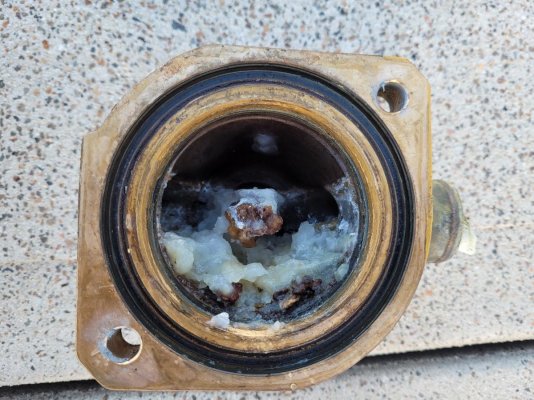O C Diver
Guru
- Joined
- Dec 16, 2010
- Messages
- 12,950
- Location
- USA
- Vessel Name
- Slow Hand
- Vessel Make
- Cherubini Independence 45
So I'm doing the 5,000 hour service which includes the cooling system. There is a tube bundle core that is held in place with 2 end caps. The first end cap has this white goop in it. It's about the consistency of pudding or yogurt. Basically it blocked about half of the tubes plus the raw water feed to the stuffing box.
I'm trying to figure out what it is. The only things that come to mind are something produced by the aluminum anode in the center or pureed jelly fish. Doubt the jelly fish would have gotten through the sea strainer.
Anyone know what it is?

Ted
I'm trying to figure out what it is. The only things that come to mind are something produced by the aluminum anode in the center or pureed jelly fish. Doubt the jelly fish would have gotten through the sea strainer.
Anyone know what it is?

Ted
